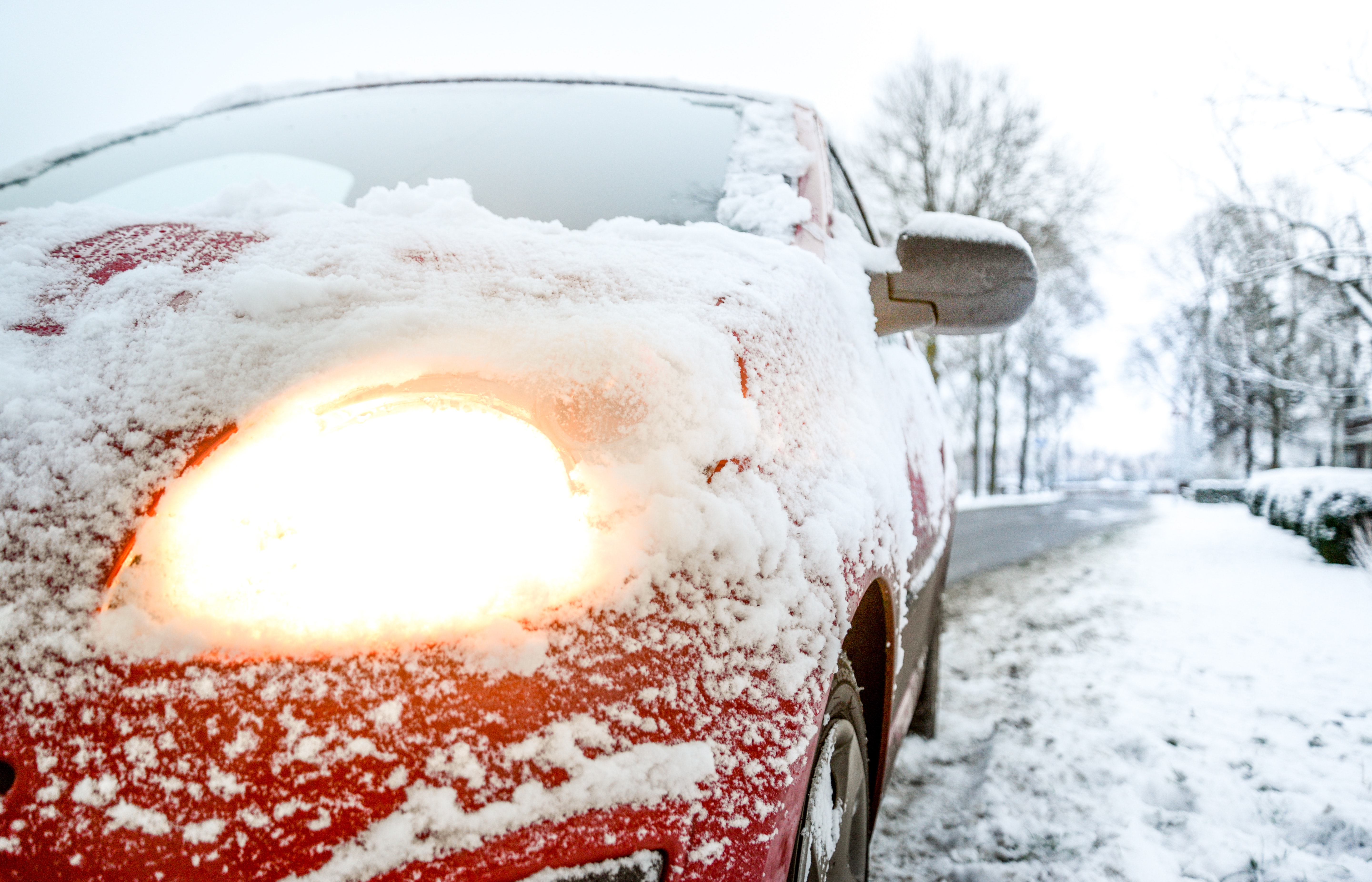Chicago Winter Car Care: Does Snow Salt Damage Cars?
March 15th, 2019 by Fix Auto USA

Chicago is known for a lot of things, including great deep dish pizza and hot jazz. It’s also known for cold, harsh winters that can make driving unsafe. That’s why snow plows applying salt to icy roads in the wintertime is a common sight in the Windy City area.
Despite the advantage of making the roads much safer, salt does cause some problems. From an environmental standpoint, salt runoff can pollute nearby bodies of water to the point where it is harmful to plants and animal life. Road salt can also cause significant damage to vehicles over time because it is highly corrosive. Taking steps to minimize the corrosive power of salt can help protect your Chicago car and add years to its life.
Rust: Car Enemy #1
Regardless of what causes it, rust is one of the biggest threats to vehicles. Salt is a leading cause of rust in cars – on the exterior and the undercarriage of the vehicle. The more your car gets exposed to salt, the greater the chances of rust appearing on the paint, axles, frame, and other areas of the car.
The undercarriage of your car is the area most vulnerable to salt damage for two reasons. One, it is closest to the salt spread out all over the road. Two, the open design of the undercarriage offers no protection. As the salt turns the ice on the road to water, it turns mushy. As the tires drive through the mush, it kicks up salt-laden slush that lands all over the undercarriage. The colder the air, the more this slush sticks to your vehicle where it can damage your exhaust and muffler systems, coil springs, hydraulic brake system, and more. However, because the undercarriage of a car isn’t easily visible, salt damage can go unnoticed for a long time.
Salt Damage to Your Car’s Paint
 Ongoing exposure to salt can also damage the paint on your car. Since rust only occurs on metal, and paint is not made of metal, you may be wondering how this can occur. Road salt can’t rust a car’s paint, but it can corrode it by allowing salt ions to settle into the tiny pores in a coat of paint. Over time these ions create a mild acid that attacks the clearcoat surface. Other contaminants in the slush created by melting ice can contribute to this process of acidification.
Ongoing exposure to salt can also damage the paint on your car. Since rust only occurs on metal, and paint is not made of metal, you may be wondering how this can occur. Road salt can’t rust a car’s paint, but it can corrode it by allowing salt ions to settle into the tiny pores in a coat of paint. Over time these ions create a mild acid that attacks the clearcoat surface. Other contaminants in the slush created by melting ice can contribute to this process of acidification.
As the acid gradually breaks down the integrity of the paint’s clearcoat, the paint can fade, discolor and eventually lose its ability to protect the underlying metal. At that point, rust will begin to occur. If undetected, it can actually eat through the metal, causing cosmetic and structural problems. At that point, your best option is to put your car in the hands of trained professionals.
Salty slush can end up on your car’s paint in several ways. Passing cars can spray it onto the sides of your vehicle. Large trucks can kick up enough slush to land on your hood and even the roof of your car. Your own tires can splash salt on side panels and wheel wells. When the roads dry up, wind can blow salt residue all over your vehicle.
Unfortunately, there is no way to avoid exposure to salt once it gets spread all over the road. Fortunately, there are several steps you can take to minimize and mitigate the damage caused by salt on your car.
Protecting Your Car Against Road Salt
The first step involves having your car inspected for existing rust and paint damage before the snow falls and turns to ice. Fixing these areas before the salt hits the road can prevent them from becoming worse. Waxing your car before winter arrives will provide an important layer of protection. It also helps to treat the undercarriage with an oil solution that helps prevent salt and water from sticking metal parts. Most collision shops offer this service.
Once you begin driving on salty roads:
- Wash your vehicle right after a snow storm. The sooner you remove the salt from your car, the better. If possible, wash your car when temperatures reach 40 degrees or higher. Also, washing during the day will give your car more time to fully dry before nighttime temperatures turn freezing.
- Use an under-spray. A regular car washing won’t remove all the salt from the undercarriage. If you typically go to a drive-through car wash, use one that cleans the undercarriage. If you use a self-serve wash facility or wash at home, make sure to direct a hard stream of water underneath your vehicle.
- Avoid driving in puddles and deep snow. Salt tends to concentrate in puddles. Driving through them can also splash salt onto the upper areas of your car. Deep snow can deposit more salt onto your car’s undercarriage.
- Avoid snow plows. Driving right behind a snow plow exposes your car to high levels of fresh salt.
- Park indoors. Parking in garages or covered areas will reduce the chances of other vehicles splashing salt on yours. If you must park outdoors, use a car cover.
Finally, watch for warning signs that salt is causing damage to your car – both cosmetically and structurally.
Driving on salty roads is a fact of life throughout much of the U.S. Practicing these prevention tips will help protect your vehicle from the ravages of salt and rust. When rust does occur, bring your car to your nearest Fix Auto location for fast, professional auto body repairs.
Welcome to
Fix Auto USA
We are the premier independent body shop network delivering world-class customer service and high-quality collision repairs across the U.S.
Learn About Us





